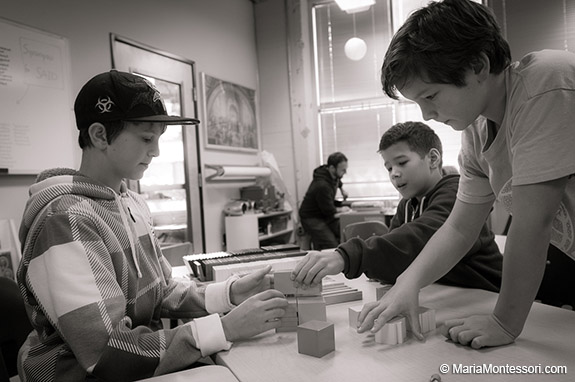
October 30, 2022
These astonishing, inspiring, infuriating, delightful, intellectual, affectionate, willful, imaginative, perplexing, energetic, shape-shifting, social, inconsistent, big-hearted, enigmatic, demanding, reflective, dramatic, complicated elementary children of ours: who are they? They are like arrows shot from our bow, and if we would understand them, we must look far into the distance where they are aimed: adolescence.
The elementary years are years of vigorous, continual growth, stretched between the two poles of the first and third planes of development. Building on the foundation – whether solid or shaky – of the first six years, they aim for the heights of adolescence. Everything that we have a hope of understanding about these elementary children can be understood as a function of three things: the raw materials of personhood that they bring with them from early childhood; the developmental trajectory toward adolescence; and the quality of the support and protection they have from us along the way.
Adolescence is a supremely social time of life dominated by the work of self-understanding, of orienting oneself in society and history, and of beginning to experience oneself as a power in the world. Our elementary children are on the way to this and are therefore increasingly social, increasingly independent and competent, and possessed of an increasingly penetrating intelligence.
As Donna Bryant Goertz likes to say, if the First Plane children are like tadpoles, the elementary children are like the frogs into which they were transformed, and keeping a frog in the underwater environment that was right for the tadpole will kill it. Both guides and parents must dramatically alter their way of working to match the very different needs of the new elementary child before them.
This does not mean that we begin to treat our elementary children as though they were adolescents to “help them grow into it” any more than we would take a tadpole out of the water to help it get used to breathing. On the contrary, the needs of the child are just as different from the needs of the adolescent as are the needs of the child under six from the child over six. Children need us to be fierce protectors of their childhood, by which I mean protectors of a full six years of safe space and time in which they can run the many social and intellectual experiments, experience the many little and not-so-little failures and successes, and learn the many ins and outs of their maturing bodies and brains that necessarily constitute “growing into it.”